



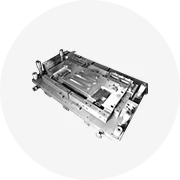
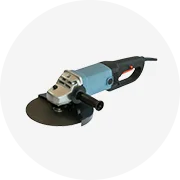

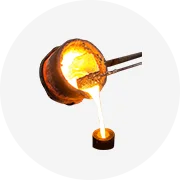
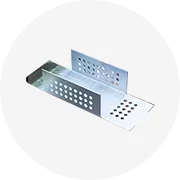
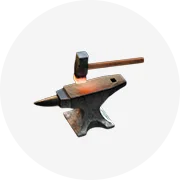
A Roman column mold serves as a template for casting stately and classical columns, drawing inspiration from the architectural heritage of ancient Rome. These molds are engineered to produce structural components that fulfill both supportive and ornamental roles in edifices, landscapes, and various other edifices. The Roman pillar mould is meticulously fashioned to fabricate pillars with exceptional precision and elaborate detail, mirroring the splendor of Roman edifices.
An assortment of Roman column molds on Alibaba.com encompasses a range of styles, including decorative concrete pillars, baluster molds, and traditional column designs. Each variant fulfills distinct decorative and structural functions. Molds for decorative concrete pillars are commonly utilized in outdoor garden settings, whereas baluster molds are perfect for crafting sophisticated balcony balustrades or stairway handrails. Traditional column molds are often used in the restoration of historic structures or the construction of new buildings with a classic aesthetic. These variations enable firms to meet the diverse tastes and project specifications of their clientele.
A Roman pillar mold consists of several integral parts: the inner core, the outer shell, and the elaborate design imprints. The inner core shapes the column's hollow interior, while the outer shell molds the exterior, complete with detailed Romanesque motifs. In use, concrete is poured into the mold and, upon setting, the mold is delicately removed to unveil a column that faithfully replicates the original Roman architectural nuances.
Materials such as polyurethane, ABS, and natural stone are chosen for Roman column concrete molds based on attributes like resilience, pliability, and the quality of the finished aesthetic. Polyurethane strikes a balance between pliability and robustness, apt for complex designs. ABS is favored for its superior impact resistance, crucial for enduring usage. Natural stone molds offer an unmatched premium, genuine texture to the cast columns, a feature greatly prized in high-end construction endeavors.
Roman column molds are deployed in various commercial contexts, including the construction of opulent residential estates, the refurbishment of historical landmarks, and the design of sumptuous hotels. In commercial edifices and upscale retail centers, these molds infuse a touch of refinement, drawing visitors and augmenting the shopping ambiance. By enhancing a structure's visual appeal, these molds assist businesses in forging distinctive landmarks that distinguish themselves in the competitive property market.
The principal role of a Roman pillar mould is to sculpt concrete or other casting substances into load-bearing columns. Moreover, these molds are adept at precisely emulating historical designs, facilitating the conservation of architectural heritage. They also adorn contemporary buildings, adding an artistic flair that can elevate a project's prestige.
Key attributes of Roman concrete pillar molds include their high precision, capturing every nuance of the classical design. The sustainable and robust nature of the materials used also stands as a unique selling proposition, resonating with the increasing demand for eco-conscious construction practices. Additionally, the simplicity of demolding and the molds' capacity for repeated use without detail degradation offer competitive edges.
Employing a Roman column mould yields numerous advantages, such as reduced labor and material costs compared to conventional stone carving. The molds also guarantee consistency in quality and aesthetics, ensuring uniformity among numerous columns. For enterprises, this equates to a dependable and efficient production method for architectural elements that can amplify the value of their construction ventures.
Proper utilization of a Roman pillar column mold entails prepping the mold with a release agent, filling it with the casting material, and allowing for adequate curing time before demolding. Maintenance requires cleaning with gentle detergents and storage away from harsh temperatures and direct sunlight. Periodic inspections for wear and damage ensure the mold's intricate designs endure.
Selecting the optimal Roman column mold requires evaluating the design needs of the project, the characteristics of the materials, and the anticipated durability of the mold. For projects demanding fine details, polyurethane molds may be the ideal choice, while ABS molds might be preferable for areas with heavy usage due to their sturdiness.
The intended market for Roman column concrete molds comprises construction firms, architects, and event organizers who appreciate classical elegance and precision. These molds satisfy the demands of professionals aiming to imbue their projects with the enduring charm of Roman architecture while upholding contemporary standards of quality and environmental responsibility.
Roman column molds are versatile, not only for permanent fixtures but also for a multitude of events and celebrations. From the Lunar New Year to Christmas, and from nuptials to religious ceremonies, these molds can be employed to craft thematic columns that contribute to the festive or solemn ambiance of the occasion. Their adaptability makes them a favored choice among event decorators and planners.
In the current era, environmental sustainability is a pressing issue in the construction and decoration sectors. Roman column molds address this by providing eco-friendly alternatives that reduce environmental impact. Materials like PU and ABS are selected for their lower ecological footprint, and the molds' reusability ensures minimal waste. Moreover, the hollow design of some molds lessens material consumption without sacrificing structural strength.
To guarantee the extended use of a Roman pillar mould, proper care and storage are essential. Post-use, molds should be thoroughly cleansed to eliminate any remaining concrete or debris. Storing them in a cool, dry environment away from sunlight prevents material degradation. Routine checks for signs of wear or damage facilitate timely repair or replacement actions, thus prolonging their functional lifespan.